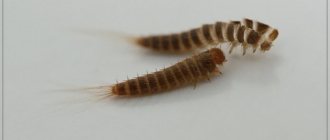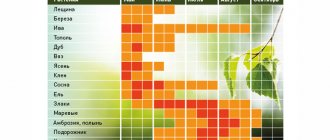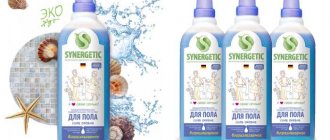A dog tick collar is one of the most used means of protecting pets. What should you consider when choosing? What is the principle of their operation? Let's consider a comparative analysis of the TOP 5 best.
The following types of tick protection for dogs are currently used:
- Drops on the withers against ticks;
- Anti-tick sprays and aerosols;
- Flea and tick tablets;
- Collars, leashes, keychains against ticks and fleas;
- Vaccinations.
If previously it was enough to use only one means of protection, now several are needed, combining drugs of different groups and compositions. One of them is a tick collar for dogs.
How to choose a safe and effective anti-tick collar for dogs, what are the features of its use, advantages and disadvantages? Read in this material.
Purpose and risk factors
Anti-tick collars for dogs are used to prevent acarosis caused by bites from almost 20 species of ticks, and entomosis caused by fleas.
The use of dog collars reduces the risk of babesiosis, Lyme disease, borreliosis, ehrlichiosis and anaplasmosis due to ectoparasite bites.
The danger of a dog being bitten by ticks and other ectoparasites
About the varieties of ticks, habitats and features of their development in a separate material on the site.
Types of collars and principle of operation
Depending on the composition of the active components and the principle of action, anti-tick and anti-flea collars for dogs can be:
1. Chemical principle of action . The collar is a polyvinyl tape with a fastener, impregnated with an insectoacaricidal preparation. The effect of such collars, as well as the effect of drops on the withers or repellent preparations, is based on the use of insectoacaricidal poisons. The active substances (D/V), without being absorbed into the systemic bloodstream, accumulate in the epidermis, hair follicles and sebaceous glands of the animal’s skin and, released to the surface of the skin along with the secretions of the glands, have a long-term contact and intestinal insectoacaricidal effect. D/V, upon contact with an insect, blocks the transmission of nerve impulses of insects and subsequently leads to paralysis of their neuromuscular system. The preparations also contain an insect growth regulator, which suppresses the growth of integumentary tissues in insects, disrupting the development of larvae in the egg, preventing the development of full-fledged pupae and causing the death of parasites in the preimaginal phases of development. In addition, D/W, with its fumigating properties, can repel ticks, fleas and lice, preventing bites.
2. Biological principle of action . Safe essential oils and extracts of medicinal plants are used as active substances. Such collars do not kill ticks and fleas, but only repel them. They are most often used for puppies, weakened, convalescent and pregnant dogs.
3. Ultrasonic collars or key fobs . The operating principle is based on the generation of ultrasonic vibrations that repel ectoparasites. Use is limited by range (about 3m) and working battery. The collar is absolutely ineffective against existing parasitic pests. This type of protection is not widely used; reviews from dog breeders are contradictory.
Ultrasonic anti-tick collar for dogs
How to figure out who is affected by a flea collar
Typically, the range of parasites that the collar is effective against is indicated on the packaging. It’s a little more difficult to understand the special terminology, but it’s also possible.
“Cidal” action implies the destruction of the parasite. Acaricides destroy ticks, insecticides destroy insects. Insectoacaricides – both. Inhibitors of chitin synthesis have ovo- and larvocidal effects. These are substances that disrupt the process of molting and oviposition in insects. Ovo is an egg, and larva is a larva. Such substances are relevant if the animal is infected with fleas, lice or lice, because eggs are more difficult to destroy than adults. Repellents are substances whose odor repels arthropods. They can be either natural (essential oils) or synthetic (“DEET”, etc.). Multi-component collars often contain insectoacaricides, ovicides, and repellents.
Features of application
The use of anti-tick collars, leashes and keychains for dogs is generally a simple and moderately effective method of protection.
The collar is put on the dog, adjusted in size so that there is a gap of 1.0–1.5 cm between the animal’s neck and the collar, then the free end of the tape is passed through the clamp and the excess collar is cut off, leaving the end no more than 5 cm long.
The collar is used continuously during the parasite activity season. The collars begin to work 2-3 days after the start of use. In the first days of using the collar, ixodid ticks may attack and attach to the animal, but after 1–2 days the parasites spontaneously fall off. The effectiveness of using a collar depends on the condition and size of the dog's coat. Before putting on the collar, wash the dog, and after washing, put the collar only on dry hair. The period of protective action is up to 6 months.
Contraindications and restrictions
Insectoacaricidal collars, in terms of the degree of impact on the body, are classified as “moderately dangerous substances” (hazard class 3 according to GOST 12.1.007-76), and do not have a resorptive-toxic or locally irritating effect. The active substances contained in the composition are toxic to bees, as well as fish and other aquatic organisms and belong to “hazardous substances” (hazard class 2).
For safe use, the following points should be considered:
- collars are not used for pregnant dogs, especially in the last third of pregnancy and lactating females, patients with infectious diseases and convalescent animals;
- anti-tick collars are used for dogs older than 8-12 weeks of age, depending on the manufacturer;
- Cat collars should not be used on dogs.
Side effects are observed in rare cases, with increased individual sensitivity of the animal to the active ingredients, individual reactions are possible (excessive salivation, lacrimation, muscle tremors, vomiting, skin irritation).
Allergic reactions may occur - itching and signs of skin irritation in the neck area. In such cases, stop using the collar and consult a doctor for advice.
Symptoms of overdose in dogs are observed when used together with other drugs.
Reviews
Cats and dogs
The Bolfo flea and tick collar is not the first collar we bought for our dogs, including our dachshund. A very good collar, long, does not rub, does not smell (there are those that have an incomprehensible aroma at first and dogs sneeze, we had one like that), colorless (there are those that are covered with a white coating, which also sometimes makes them sneeze), also serves for a long time. But nothing is perfect; sometimes a dog still brings fleas and ticks from a walk. And for us this is a whole tragedy, because there is also a cat living in the house. If strangers enter its territory, everyone, cats and dogs, itches. In addition, ticks are an infection. Having such a collar, I would still advise purchasing some kind of spray that needs to be used to treat the dog, especially in the summer, before a walk.
Nadezhda877
https://otzovik.com/review_848923.html
The collar protects against fleas, ticks, mosquitoes, lice and other living creatures. Made from oils, which is safe for animals. But the smell of the collar is thermonuclear. I observed the effect of the collar at the dacha. Flies and mosquitoes flew around the dog, but did not land. No fleas yet. The dog loves to run in inaccessible overgrown places. Last summer there were fleas. When using the Bars collar. There have been no ticks yet either. I try to change the collar every month or so. Just in case. Fine. I recommend it.
Sunny72
https://irecommend.ru/content/normalno-554
We bought a Rolf Club Premium collar for our dog. It holds perfectly, will not unfasten on its own under any circumstances, does not rub or press, or scratch the animal’s neck. It's easy to use and doesn't smell at all - that's a big plus. I once bought an inexpensive collar for a cat, but it stank so much that my pet went into hysterics. I had to throw it away. And since then she generally does not recognize anything that is put on her neck. But the dog doesn’t care - she has long been accustomed to collars and leashes, the foreign smell does not irritate her, because there is simply none. Expensive, but convenient and good protection is provided. Although the little dog roams around in all sorts of “dangerous” places, actively communicates with other dogs, scurries around in the grass and bushes, she has neither fleas nor ticks and, I hope, never will.
Lacrimosa7002
https://otzovik.com/review_2143767.html
The “COMFORT” bio-collar against fleas and ticks for cats is ineffective. We bought this collar for our Murzik because the BIO prefix made us think about the safety of this product. But it looks like the collar is safe for the fleas themselves. Of course, their number has become a little smaller. But it did not save our pet from this misfortune. It all ended with Murzik simply losing him somewhere after a couple of weeks.
Lenchik2
https://otzovik.com/review_1332885.html
Doctor Zoo Biocollar. On the very first day of wearing this “miracle” collar, my dog turned inside out several times. Then we thought it was because of the diet, but the next day the situation repeated itself. My pet has become lethargic and inactive. It seemed to me that she was dying. It was only when I took her to the vet that they explained to me that this collar was not as good as I thought. They bought another collar for the dog, but only put it on it two weeks later. Now my pet is full of strength! Don't be lazy and ALWAYS check what you buy for your animals.
Ekaterina_2014
https://nashemnenie.com/zhivotnye/19039-osheynik-protiv-bloh-i-kleschey-doktor-zoo-bioosheynik.html
For many years I have been purchasing flea, flea and tick collars from Hartz for my Yorkies for puppies and adult dogs. Their main advantage for my pets was the absence of a pungent odor, as well as long-term protection against fleas, flea eggs and ticks. They begin to act immediately after putting them on and reach maximum protection after a few days; after removing the collar from the package, you shake it, powder appears, and this is the active substance. We put it on in early spring and don’t take it off until late autumn. Taking into account that dogs are “sofa-loving” dogs and often sleep in their owners’ beds, the absence of a pungent chemical odor is not unimportant. As a rule, the collar lasts throughout the warm period; in especially humid years I add drops of the same company to the withers. Collars do not need to be removed during bathing. The price seems a little expensive, but if you count how many collars you purchased during the warm season and at what price, then the material benefit, as they say, is obvious. I am writing for owners of dogs suffering from allergies and who are in doubt about which brand of collars to buy. Tested on myself, as they say, and I recommend it to you.
Quinoa
https://otzovik.com/review_4719378.html
Advantages and disadvantages of using collars
The advantages of wearing anti-flea and anti-tick collars include:
- their long validity period is 5-7 months, with constant wearing;
- simplicity and ease of use;
- safety, because the active substance does not enter the animal’s bloodstream, penetrating only into the skin.
The disadvantages include:
- it is not possible to provide control over the interaction of the active substance and the dog’s skin and coat, which does not guarantee constant protection;
- The long period of action of the tick collar declared by the manufacturer often reduces the attention of owners to protection issues, creating only the illusion of protection;
- the dog may experience discomfort from wearing a collar, especially at first and/or when it is rarely used;
- the collar often causes an allergic reaction, it is necessary to monitor your health condition, if necessary, stop using it and consult a doctor;
- there is a possibility of overdose of insectoacaricides when used together with drops on the withers or sprays;
- high cost of well-proven foreign-made collars.
Tick bite on a dog and comparative size of the tick after the bite
Why do dogs need flea protection?
Fleas, ticks and other parasites pose a real threat to the health of the dog, as well as its owner. They cause discomfort and can cause infection with dangerous diseases. Substances released by parasites when they bite can cause an allergic reaction. Long-term flea parasitism leads to hair loss, disturbs the pet and deprives it of normal sleep. When bitten by fleas, dogs scratch the affected areas, introducing infection into the scratches. In addition, fleas are carriers of helminths, which parasitize the dog’s intestines and release toxic substances. Fortunately, there are many insect repellent products available today. One of them is a flea and tick dog collar.











